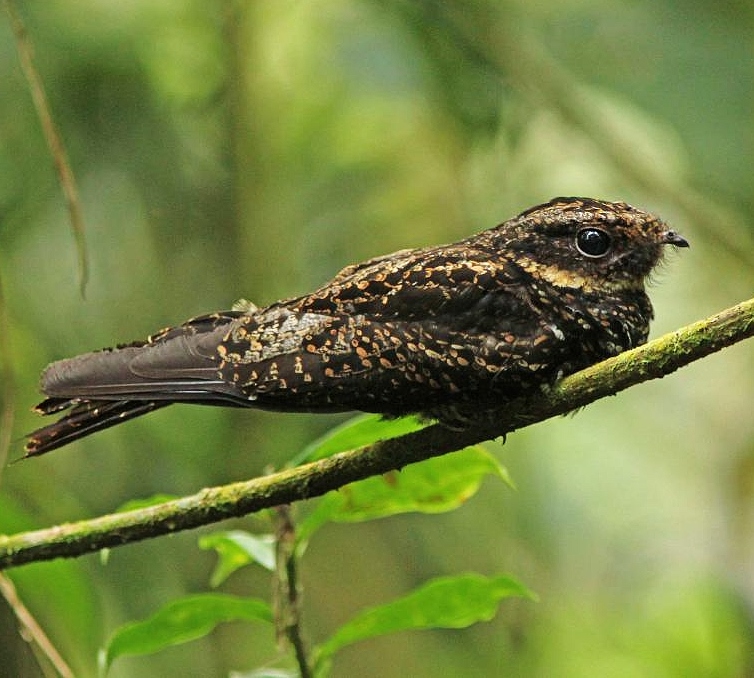 |
| Photo by David Beadle (Internet Bird Collection) |
Common name:
Sulawesi eared-nightjar (en); noitibó-diabólico (pt); engoulevent satanique (fr); chotacabras diabólico (es); teufelsnachtschwalbe (de)
Taxonomy:
Order Caprimulgiformes
Family Caprimulgidae
Range:
This species is endemic to Sulawesi, Indonesia, where it is confined on the mountain ranges in the north and centre of the island.
Size:
These birds are 26-27 cm long.
Habitat:
The Sulawesi eared-nightjar is found in evergreen rainforests, at altitudes of 250-2.100 m, tolerating at least selective logging.
Diet:
They feed on insects caught in flight, particularly moths and beetles, hunting at twilight and in the night.
Breeding:
Sulawesi eared-nightjars breed in March-October. They nest on the ground, in forest clearing with some fern and moss cover, where the female lays a single cream-coloured with with brown speckles. There is no information regarding the incubation period, but the chick fledges about 30 days after hatching.
Conservation:
IUCN status – VU (Vulnerable)
This species seems to have a small breeding range, although it may be more widespread and overlooked. The population is estimated at 2.500-10.000 individuals and suspected to be declining at a moderate rate, mostly due to forest habitat loss and fragmentation at lower altitudes, owing to land clearance for transmigration settlements, shifting cultivation, plantation agriculture and large-scale logging. The forests at higher altitudes are currently relatively secure.







